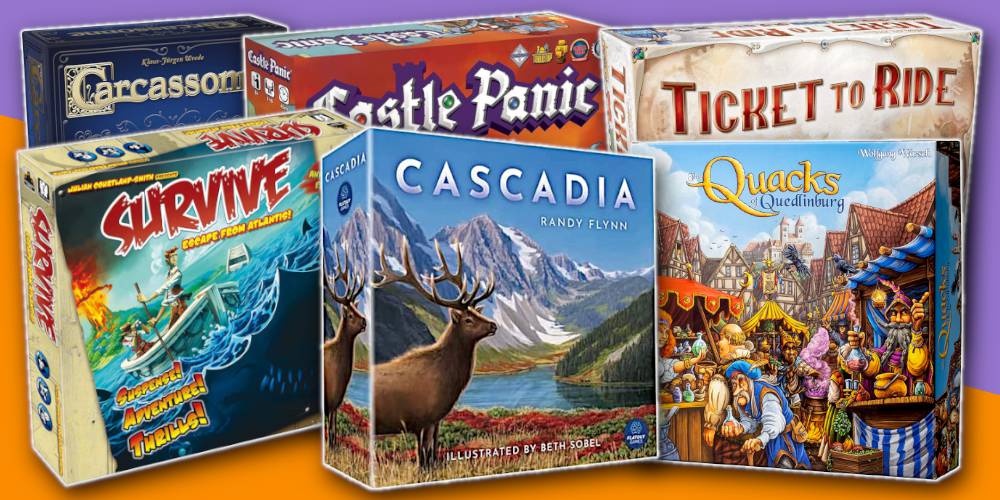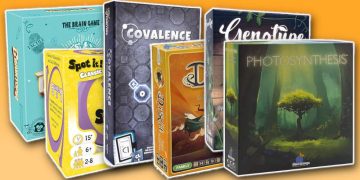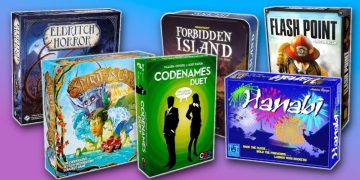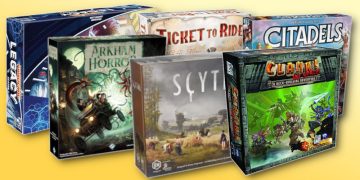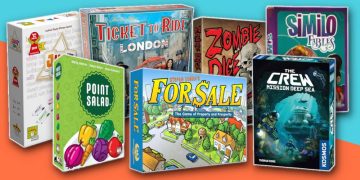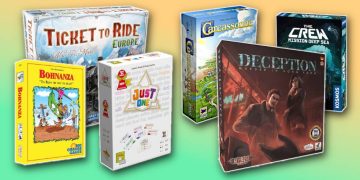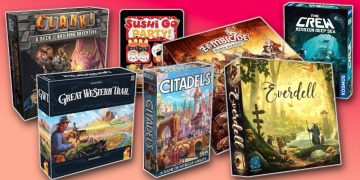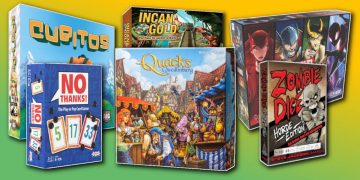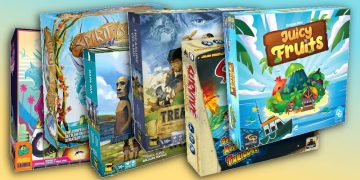Board gaming as a hobby is full of wonderful games that can be played solo, with two players, and large groups of people. But maybe you need a game that falls in the middle—a game for traditional family sizes.
However, the concept of a family board game can be quite nebulous. Surprisingly few board games are actually great for the whole family, even among so-called "gateway" games.
What Makes a Great Family Board Game?
When I think of board games that are great for families, there are several important criteria I think they need to meet:
- Supports at least 4 players. Whether it's after dinner on a school night or when extended family comes to visit, most family board games come out when there are at least four players.
- Easy to learn. A family board game should be great for the whole family, which can include kids as young as three years old as well as non-gaming parents who aren't used to complex gameplay.
- Fun but not crazy. To me, a great family board game avoids both extremes of the spectrum: it shouldn't be boring or mundane, nor does it need college party-style hootin' and hollerin'.
- Plays in under an hour. Family board games often come out on weeknights after dinner, so they need to be short enough to fit into the night before bedtime.
With that said, here are my picks for the best family board games of all time that are absolutely worth playing right now.
Note: Despite considerable overlap, we consider party board games as separate from family board games. Want something more party-style? See our best party board games for groups.
11. Blokus
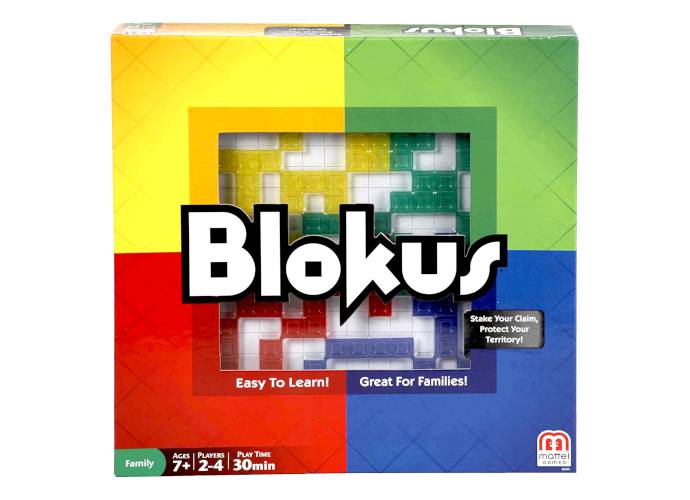
Players supported: 2 to 4 players
Average playing time: 20 to 30 minutes
Blokus is a classic family board game where players take turns and aim to get all of their polyomino pieces (think Tetris-style shapes of various sizes) on the board before space runs out.
The twist is, you can never place a piece in a way that makes it adjacent to any of your other existing pieces on the board. Instead, you must place pieces so that they only touch corners with at least one existing piece.
Blokus is a wonderful game that's half puzzle, half strategy, and one hundred perfect fun. It's particularly great for kids with its abstract visual gameplay that exercises their spatial intelligence.
10. Castle Panic
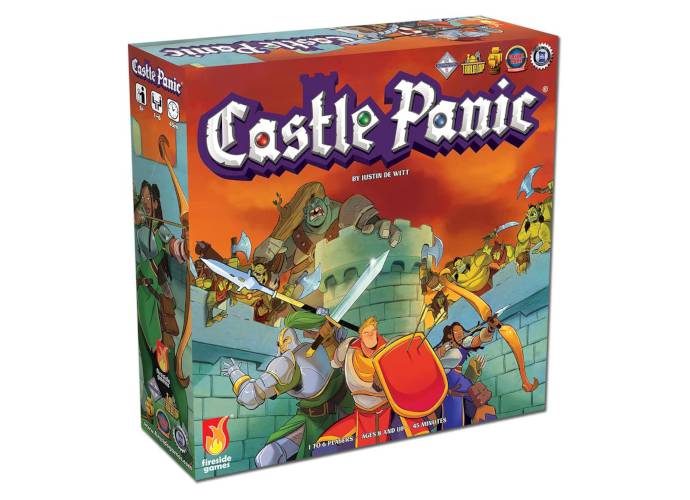
Players supported: 1 to 6 players
Average playing time: 45 to 60 minutes
Castle Panic is a fairly simple board game that's entirely cooperative—you're all working together to fend off waves of enemies as they storm your castle, and the goal is to survive to the end.
The gameplay is straightforward, with monsters spawning in a circle around your castle and moving in every turn, and players each having a hand of cards that determine which areas they can attack.
Castle Panic is the perfect kind of game for parents to play with younger children. It's tactile, visual, and a great introductory game for strategic cooperation that isn't overwhelming.
9. Carcassonne
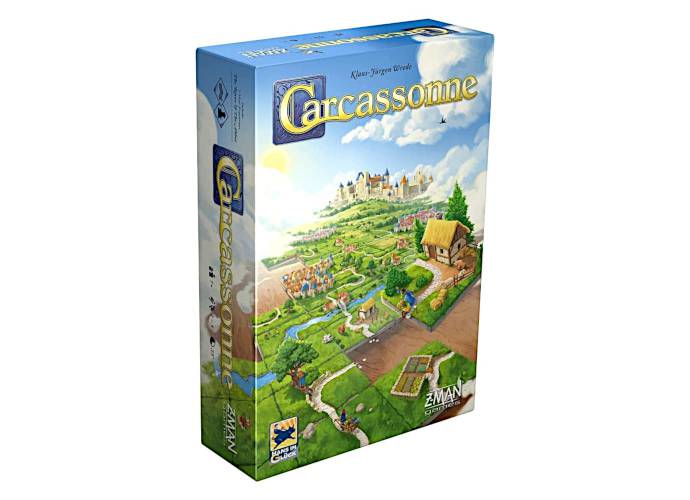
Players supported: 2 to 5 players
Average playing time: 30 to 45 minutes
Carcassonne is the quintessential "gateway" board game because it's simple to play, indirectly competitive, deceptively strategic, with enough variation from play to play that it doesn't grow stale.
All of that makes it great for families to play together—it's no wonder why so many families love Carcassonne.
Players take turns and each player's turn is dead simple: draw a tile, place that tile, and optionally place a meeple token to claim territory. At the end, completed territories grant points to whoever has more meeples in them.
Carcassonne is a board gaming classic for a reason. Not only is it perfect for family nights, it can fit into pretty much any board gaming group.
8. Ticket to Ride
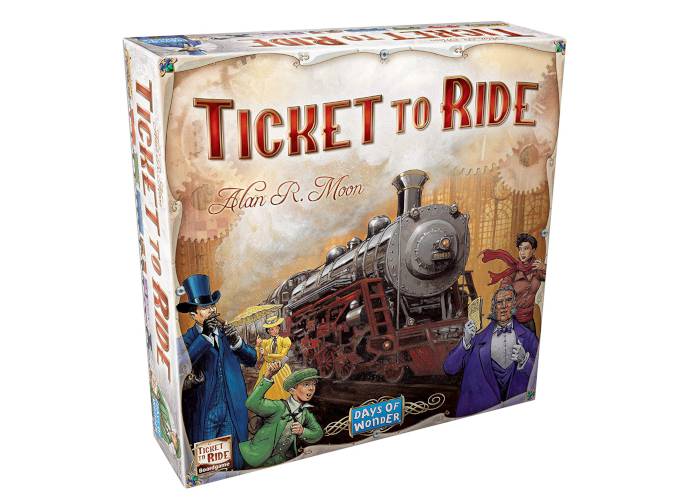
Players supported: 2 to 5 players
Average playing time: 30 to 60 minutes
Ticket to Ride is right up there with Carcassonne as one of the greatest "gateway" board games of all time, primarily for its simple gameplay that remains fun despite how many times you might replay it.
In Ticket to Ride, you play against each other as you all play cards from your hand to complete railroad routes across the country. Most routes can only be claimed by one player, so that's where competition comes in.
If you're looking for a board game that feels like a proper board game, one that's easy enough for kids to learn but interesting enough to keep adults engaged, then Ticket to Ride is one of your best options.
7. No Thanks!
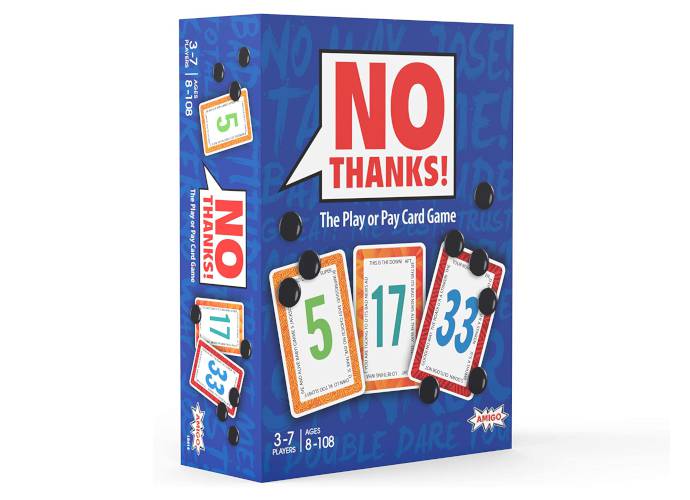
Players supported: 3 to 7 players
Average playing time: 20 to 30 minutes
No Thanks! is a simple reverse auction-style game that involves nothing more than a deck of cards numbered from 3 to 35, plus tokens that players use to say "No thanks!" to avoid taking cards.
The goal is to get the lowest score, with each card's number being its point value. Players take turns placing a token on the card to avoid taking it—but if someone decides to take it, they get the card along with all the tokens placed on the card.
There's a little more to it than that and it probably sounds unimpressive on paper, but No Thanks! is one of those games that you have to experience for yourself. It plays very fast and it's lots of fun for any family.
6. Kingdomino Origins
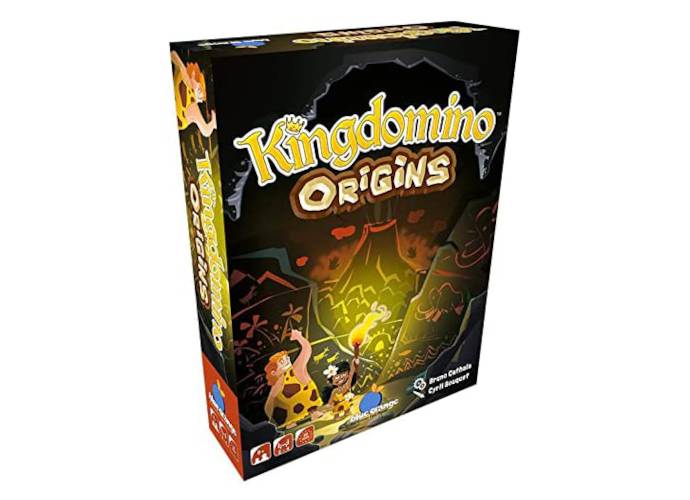
Players supported: 2 to 4 players
Average playing time: 30 to 60 minutes
Kingdomino Origins is one of the best family board games of the past few years, mainly because it comes with three different game modes of increasing complexity.
In other words, you can play the basic Discovery game mode—similar to the original Kingdomino—with kids and the Tribes game mode with teenagers and adults. (The other game mode is more of a transitionary ruleset that bridges the Discovery and Tribes modes.)
The Discovery mode is about drafting and placing tiles to build up a kingdom of different terrain regions, while the Tribes mode introduces tribespeople who score points in additional ways.
5. Bohnanza
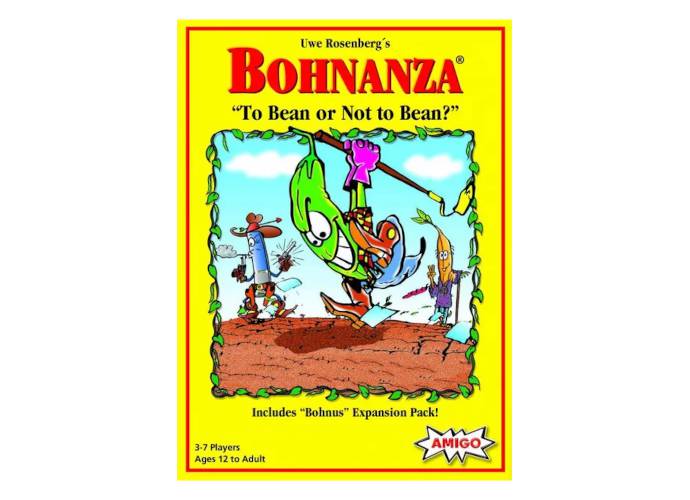
Players supported: 2 to 7 players
Average playing time: 45 to 60 minutes
Bohnanza is the ultimate trading and negotiation card game that's perfectly playable between kids and adults.
In Bohnanza, each player is a bean farmer who manages a hand of different bean cards that can be "planted" on the table in front of them. However, you only have two plots and each plot can only hold one type of bean—to plant a different type, you have to uproot what you have.
The other twist is that your hand of cards can't be rearranged! You have to plant them in the order you draw them—which is where trading comes into play, as you'll want to skillfully trade beans to maximize your plots.
Bohnanza is simple enough for kids to comprehend yet deep enough for adults to enjoy, making it a timeless classic of family game nights.
4. Cascadia
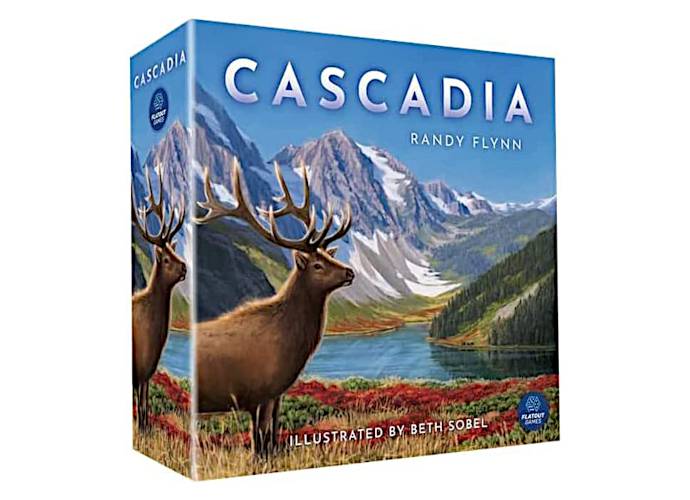
Players supported: 1 to 4 players
Average playing time: 30 to 45 minutes
Cascadia is an amazing board game for families that want something that's relaxing with simple rules and no direct competition, complete with puzzly gameplay that gets you thinking (but not stressful).
In Cascadia, players are building up their own national parks. On their turns, each player drafts from a selection of tile-and-token pairs—the tiles represent terrain and tokens are placed within tiles.
You need to place habitat tiles to maximize the sizes of different regions, whereas wildlife tokens need to be placed in different patterns that are specific to each animal. That's what makes it a relaxing puzzle.
Cascadia is my personal favorite of all the games released in 2021, and it's the kind of game a family can play every night if they wanted to!
3. The Quest for El Dorado
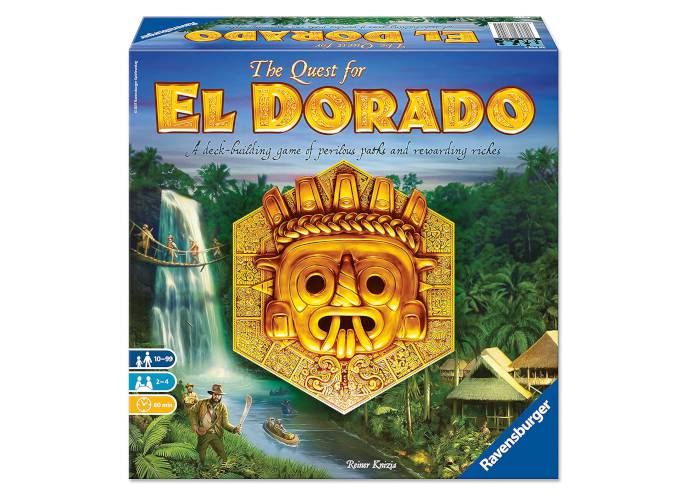
Players supported: 2 to 4 players
Average playing time: 30 to 60 minutes
The Quest for El Dorado is a lovely board game for families who want to step up from the usual fare and try something just a tad bit more complex.
In The Quest for El Dorado, all players are competing to travel across the map and reach El Dorado before everyone else. What makes this game interesting is that it's a deckbuilding game.
You start off with a small deck of weak movement cards. As you explore, you can buy better cards that get shuffled into your deck, allowing you to make better moves as you draw from your evolving deck.
The Quest for El Dorado is a race to the finish, and it has surprising replayability because the map is modular—every game's race can be different from the last, requiring different tactics.
2. The Quacks of Quedlinburg
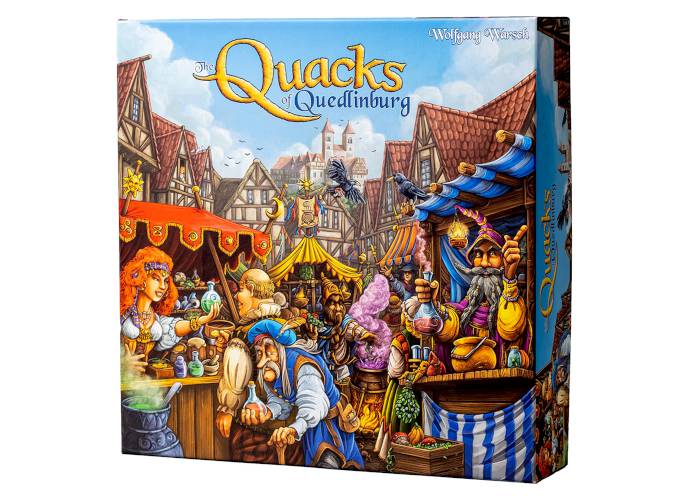
Players supported: 2 to 4 players
Average playing time: 45 to 60 minutes
If you're seeking a thrilling night that's fun for all ages—for board game newbies and veterans alike—it's hard to beat The Quacks of Quedlinburg.
This is a push-your-luck game where every player has their own personal pouch of potion ingredients. Each round, players pull out ingredients one by one to add to their cauldron for brewing a better potion.
But beware! Every player's ingredient pouch also contains several cherry bombs—and if too many cherry bombs are pulled out, that player's potion will explode that round.
As the game goes on, players can buy better ingredients to add to their pouch, but the threat of cherry bombs is always there.
The Quacks of Quedlinburg provides all the thrills of a slot machine with none of the monetary risk. You'll be excited one minute and devastated the next—and not just you, but everyone else.
1. Survive! Escape From Atlantis
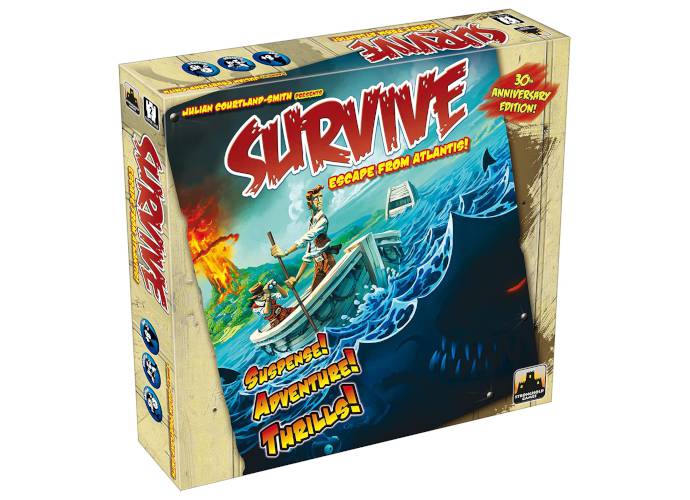
Players supported: 2 to 4 players
Average playing time: 45 to 60 minutes
For a family board game that maximizes player interaction and thrilling entertainment, there's none better than Survive! Escape From Atlantis.
Players each control several people on an island that's slowly sinking into the ocean. The goal is for each player to get as many of their people off the island to safety on the mainland.
The trouble is, each player picks which island tile sinks every turn, so the safety of your people rests in the hands of everyone else.
Not only that, but the waters around the island are infested with sharks, whales, and sea monsters—and they're also controlled by players. They make it much harder to reach the mainland safely!
Most of the islanders will meet their doom and fail to reach safety, and that's why Survive! Escape From Atlantis is so entertaining. Even when you're losing, it's just fun to be part of the mayhem.
Warning: Survive! Escape From Atlantis is decidedly cutthroat. While this can be very fun and exciting, if someone in your family is prone to being a sore loser, you may want to skip this. Emotions can run hot with sensitive players.
